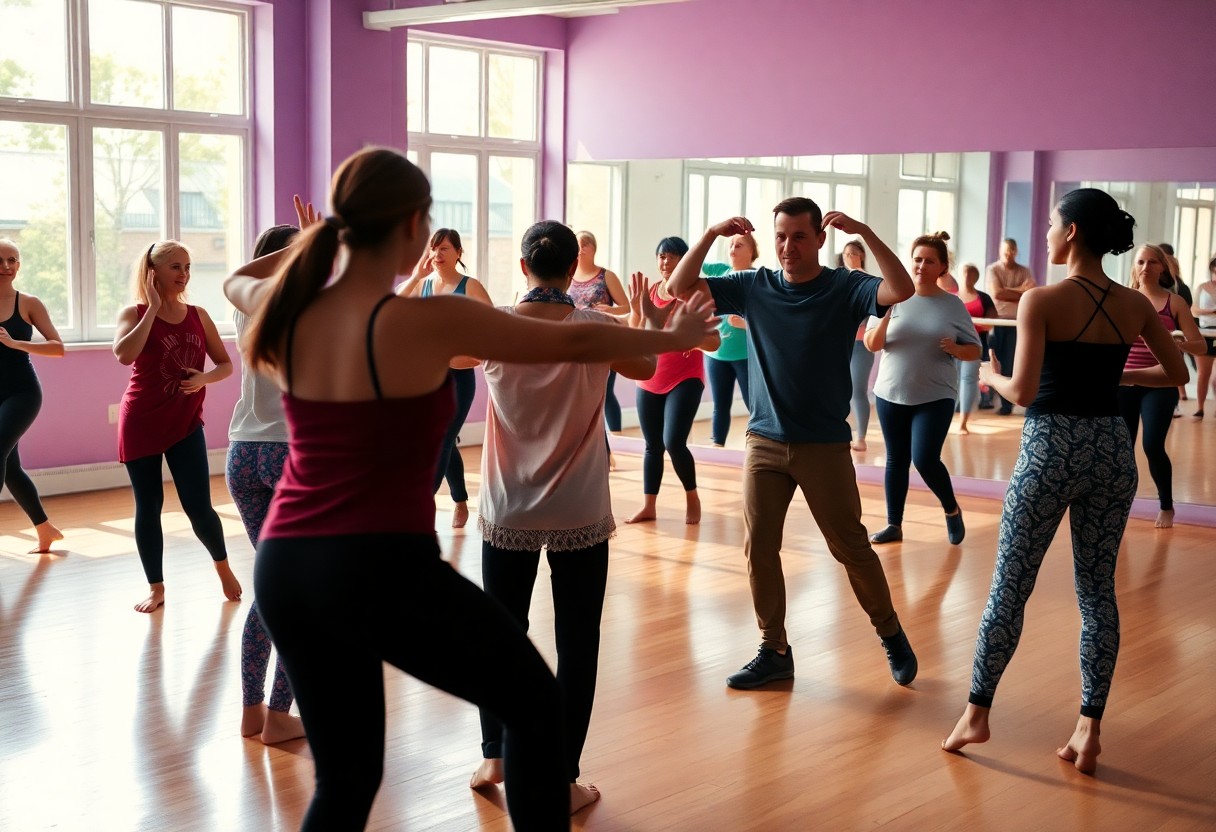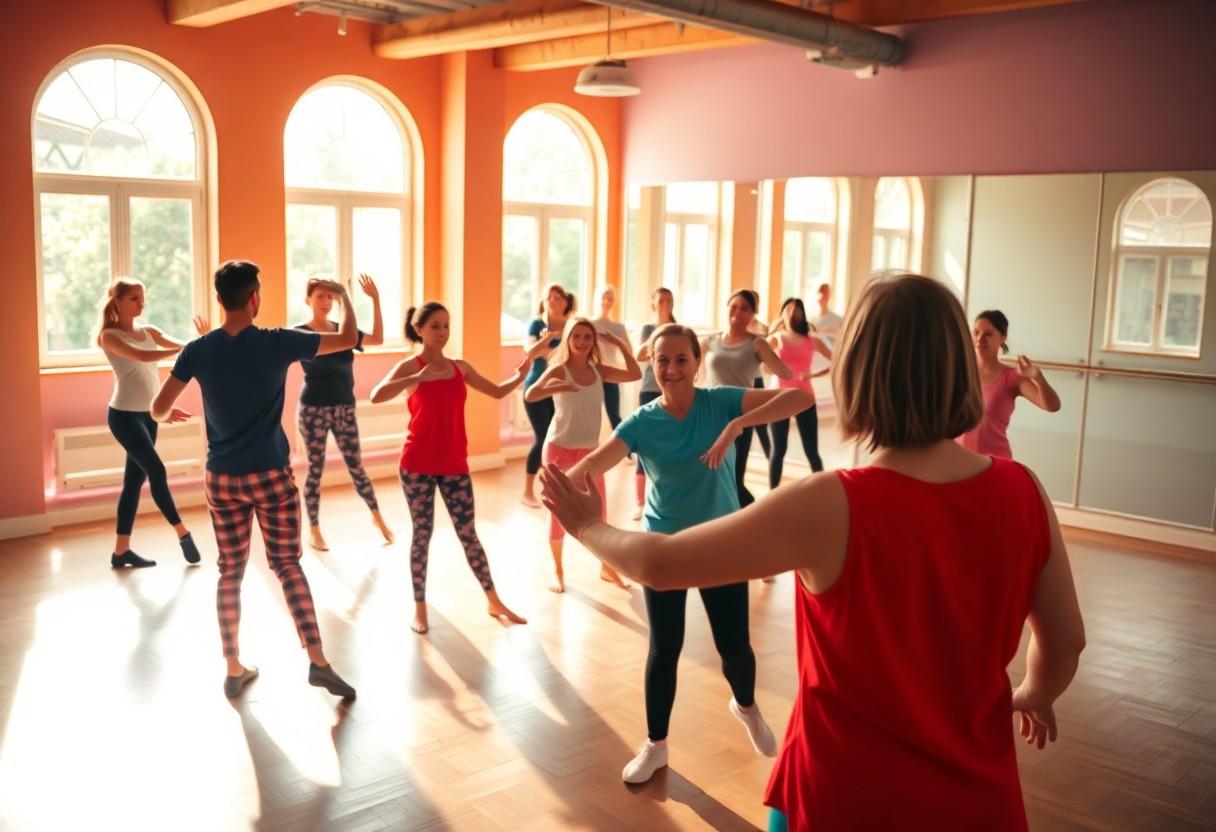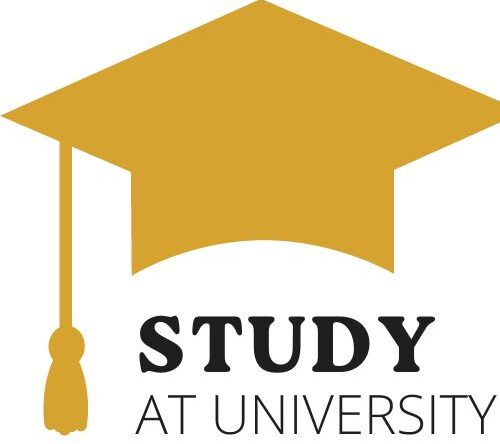Movement can be a powerful medium for healing, self-expression, and personal transformation. If you are considering a profound career in therapy, a Master of Dance and Movement Therapy (M.DMT) might be the right path for you. This innovative program blends psychology, dance, and body awareness to enhance emotional well-being and support individuals facing various challenges. Through this specialized training, you will gain valuable skills that enable you to utilize movement as a therapeutic tool, ultimately enriching the lives of those you work with.

Key Takeaways:
- The Master of Dance and Movement Therapy (M.DMT) program integrates psychological principles with creative expression through movement, fostering emotional healing and personal growth.
- M.DMT equips students with the skills to assess and address various mental health issues through dance and movement, allowing for versatile applications in therapy and rehabilitation settings.
- This program emphasizes experiential learning, combining theoretical knowledge with practical experience to prepare graduates for effective practice in diverse clinical environments.
Definition of Dance and Movement Therapy
Before exploring its depths, you should understand that Dance and Movement Therapy (DMT) is a therapeutic approach that integrates movement and dance for emotional, cognitive, physical, and social well-being. By using the body as a medium for expression, DMT allows you to process emotions and improve mental health, making it a unique form of psychotherapy.
Historical Context
About the origins of Dance and Movement Therapy, it emerged during the mid-20th century, influenced by various disciplines, including psychology, dance, and expressive arts. Early practitioners recognized the healing potential of movement and sought to create a structured way to use dance as a therapeutic tool, paving the way for its acceptance in clinical settings.
Key Principles and Techniques
The practice of Dance and Movement Therapy is founded on several crucial principles, particularly the understanding that movement can serve as a powerful form of communication. Techniques often include improvisational movement, mirroring, and guided imagery, all designed to help you connect more deeply with your emotions and body.
Definition of Key Principles and Techniques can be seen through your engagement in non-verbal communication and self-expression. In DMT, you may explore various styles of movement that resonate with your feelings, while also tapping into personal narratives and body awareness. Techniques like contact improvisation promote trust and safety, encouraging you to foster a deeper connection with yourself and others. Additionally, the process of reflecting on your movement experiences helps deepen your self-awareness, ultimately leading to therapeutic growth.

Role of a Master of Dance and Movement Therapy
There’s a significant impact that a Master of Dance and Movement Therapy (M.DMT) has on individuals seeking healing through expressive movement. You will facilitate emotional and psychological well-being by using dance as a therapeutic medium. As an M.DMT, you guide clients through movement exercises that enhance their self-awareness, promote emotional expression, and foster personal growth. Your role is to create a safe environment where clients can explore their feelings, confront challenges, and connect through the universal language of movement.
Educational Requirements
By pursuing an M.DMT, you must first earn a graduate degree in dance therapy or a related field, which includes both theoretical learning and hands-on experience. This often requires coursework in psychology, movement analysis, and clinical practice. Additionally, you should seek accredited programs that provide supervised internships, ensuring that you are equipped with the necessary skills and knowledge to effectively support your future clients.
Skills and Competencies
Behind your successes as a Master of Dance and Movement Therapy lies a set of necessary skills and competencies that empower your practice. Effective communication, empathy, and an understanding of diverse body languages enable you to connect with clients on a deeper level. Furthermore, your ability to observe and interpret movement patterns allows you to facilitate personal insights, fostering therapeutic growth and transformation for those you serve.
Even beyond the basics, your role requires a strong ability to adapt therapeutic approaches based on individual client needs, which enhances your effectiveness. You should also possess problem-solving skills, enabling you to address challenges creatively during sessions. Additionally, cultural competence is necessary, as you interact with clients from various backgrounds and life experiences. Cultivating a nurturing presence allows clients to feel safe and valued, leading to more profound therapeutic outcomes, enriching both your practice and your clients’ journeys.
Therapeutic Applications
All therapeutic applications of the Master of Dance Movement Therapy (MDMT) focus on enhancing emotional, mental, and physical wellbeing. This innovative approach utilizes movement and dance as tools for expression, communication, and healing. You can explore more about this transformative program at Master of Dance Movement Therapy MDMT.
Mental Health Treatment
At the heart of mental health treatment, MDMT offers unique avenues for individuals to express feelings that may be difficult to articulate. Through movement, you can process trauma, reduce anxiety, and enhance emotional regulation in a supportive environment.
Physical Rehabilitation
By focusing on the body-mind connection, MDMT facilitates physical rehabilitation as you engage in movement that aligns with your physical capabilities. This holistic approach promotes strength, mobility, and coordination while addressing psychological barriers to recovery.
Also, incorporating dance and movement into your rehabilitation program encourages joy and creativity, making the recovery process more engaging. As you learn to reconnect with your body, you may find increased motivation and confidence in your physical abilities, ultimately leading you toward a more fulfilling and active life.
Benefits of Dance and Movement Therapy
After exploring the world of Dance and Movement Therapy (DMT), you will discover numerous benefits that extend beyond mere physical expression. DMT enhances emotional awareness, fosters self-acceptance, and improves social connections while promoting overall well-being. This unique form of therapy empowers you to express feelings, alleviate stress, and gain a deeper understanding of yourself.
Emotional and Psychological Benefits
Benefits of Dance and Movement Therapy include the ability to express emotions non-verbally, helping you to process complex feelings in a safe environment. By engaging in movement, you can release tension, recognize patterns of behavior, and cultivate greater self-awareness, leading to improved mental health and emotional resilience.
Physical Health Improvements
Any participation in Dance and Movement Therapy can significantly enhance your physical health by increasing strength, flexibility, and coordination. Additionally, it promotes cardiovascular fitness, improves posture, and aids in pain relief, contributing to an overall improved sense of vitality and well-being.
Consequently, as you engage in DMT, you’ll find that the physical improvements translate into enhanced energy levels and overall body awareness. Consistent movement stimulates blood circulation and helps to strengthen your muscles, while the rhythmic patterns and techniques can reduce feelings of chronic pain. You may also notice better balance and coordination, leading to a greater sense of physical confidence and well-being in your daily life.
Methods of Practice
Not all dance and movement therapy methods are identical; they can vary significantly based on your needs and goals. Approaches can include expressive movement, improvisational techniques, and structured performance activities. Each method is tailored to foster emotional healing, improve body awareness, and enhance overall well-being. By engaging fully in these practices, you can tap into your innate ability to express and transform your emotions through movement.
Individual Therapy Sessions
About individual therapy sessions, you can expect a personalized approach that targets your specific emotions and challenges. These sessions often focus on creating a safe environment where you can explore your feelings through movement. Utilizing techniques such as guided imagery and dance improvisation, you can express what may be difficult to put into words, allowing for deeper self-discovery and healing.
Group Therapy Dynamics
Behind group therapy dynamics lies the power of shared experiences, where you can connect with others in a supportive setting. These sessions encourage communication and collaboration, allowing you to explore interpersonal relationships through movement and dance. Engaging with peers can enhance your understanding of social dynamics, foster empathy, and promote a sense of community, which are all vital aspects of emotional healing.
In fact, group therapy dynamics serve as a mirror reflecting your own interactions and behaviors, helping you gain insight into your patterns and relationships. The collective energy generated by shared movement can magnify the therapeutic experience, providing motivation and inspiration from fellow participants. By observing others and receiving feedback, you can encourage self-acceptance while also developing coping strategies that are relevant to both personal and social contexts.
Research and Evidence-Based Outcomes
Now, you can explore the growing body of research supporting dance and movement therapy (DMT) as a valuable approach for enhancing mental health and well-being. Various studies have demonstrated the clinical effectiveness of DMT in treating conditions such as anxiety, depression, and trauma. As therapeutic practices become more validated through empirical evidence, your understanding of the positive impact DMT can have on individuals increases, paving the way for broader acceptance in therapeutic settings.
Studies Supporting Efficacy
One noteworthy study assessed the effects of DMT on patients with anxiety disorders, revealing significant reductions in symptoms after just a few sessions. This demonstrated not only the potential of movement as a therapeutic tool but also encouraged you to consider dance as a legitimate and effective form of therapy. Observations indicated improvements in emotional regulation and interpersonal relationships, further solidifying the role of dance movement in treatment protocols.
Future Research Directions
Between the established successes of DMT and increasing interest, there lies a wealth of opportunities for future research. You may find that emerging studies are needed to explore DMT’s application across diverse populations and settings, allowing for a deeper understanding of its benefits and mechanisms. Furthermore, investigating the long-term impact of DMT on various mental health conditions could help inform best practices and intervention strategies.
Also, ongoing research should focus on specific populations, such as children with autism or elderly individuals coping with dementia, to fine-tune therapeutic techniques accordingly. Evaluating DMT’s integration into conventional therapeutic practices and its potential in holistic health care can enhance its accessibility and effectiveness. As you follow these developments, you’ll gain insights into how DMT continues to evolve, strengthening its position as a transformative therapeutic tool in mental health treatment.
Final Words
Drawing together your passion for dance and your desire to help others, pursuing a Master of Dance and Movement Therapy (M.DMT) can profoundly enhance your career and personal growth. This program equips you with the imperative skills to facilitate healing through movement, allowing you to make a meaningful impact in the lives of your clients. As you probe into this enriching journey, you will gain a deeper understanding of the therapeutic potential of movement, fostering both your personal and professional development in a dynamic field.

